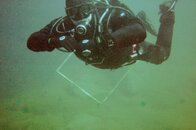Bubbletrubble
Contributor
I asked those questions because I was trying to figure out if operating any drysuit was a problem...or if you had an issue just with the Fusion. It's pretty clear that you're having a problem adjusting to drysuits in general.Hey BubbleTrubble, First of all thank you for your help in the past You have tried to help me here on Scubaboard and you offered sound advise thank you. It is just nothing seems to work.....so tired of spending money, so much time and hours and hours of thinking how I might try to figure out my issues....thank you again.
Learning how to operate a drysuit takes patience and practice. It also takes proper mentoring or formal instruction (class). Did you take a drysuit class? Do you have experienced drysuit divers who mentor you? Or were you just trying to "wing" it on your own?
Your neck seals and wrist seals sound like they're too tight. Who trimmed them? Did that person have any experience with drysuits? It's unfortunate that the dive shop from which you made the purchase hasn't been helpful. At the very least, I would think that they could get the suit set up properly for you.
You didn't mention what part of your body was getting cold. If it's just your hands, then it's possible that your wrist seals are so tight that they're restricting blood flow to your hands. Properly trimmed, the seals should allow your hands to stay warmer. You described sweating a lot in the suit. You can definitely address this issue. First, you should minimize time spent between zipping up your drysuit and splashing into the water. Every diver in my circle of dive friends has a drysuit. We get all of our gear set up first and then synchronize the zipping up process with everyone else. No one likes roasting in a drysuit while waiting around for dive buddies. For shore diving on a warm day, we'll set up our gear under a sunshade or the natural shade of a tree. Second, minimize the amount of activity on the surface before beginning the dive. I'll fully acknowledge that there are limits to this. We do a lot of shore diving here in San Diego, so sweating during the surface kick out is just something we live with. Third, if you are going to sweat, manage the sweat in the best way possible. I would suggest that you try wearing polypro underwear beneath your Fourth Element undergarments to help wick that sweat away from your skin, which should keep you warmer.
Many factors influence how easy it is to manage the bubble inside the suit. For one thing, you can try to only add enough gas to the drysuit to offset squeeze and then add/subtract gas to the BCD as needed for buoyancy adjustments. Depending on your equipment configuration, this can be helpful at deeper depths, but I've found that with my single-tank rig at shallower depths (less than 40 fsw) the air to offset drysuit squeeze is just about enough for achieving neutral buoyancy. This is very much a trial-and-error thing. You'll just have to see what works for you.
Other important factors which influence the learning curve include proper fit and appropriate weighting. I'm going to assume that you have the appropriate size Fusion suit. Are you 100% certain that you are properly weighted? Did you do a weight check at the surface (or at shallow depth) with a comfortable amount of air inside the suit and empty BCD? (And you remembered to compensate for any remaining gas in your tank at the time of the weight check, right?) Keep in mind that if you are over-weighted, you will have to compensate for that unnecessary weight with extra gas either inside the drysuit or inside the BCD. Making the bubble larger than it needs to be can make your job more difficult as a beginner drysuit diver, particularly during ascents.
It sounds like you've already made up your mind that a drysuit simply won't work for you. I'm sorry that we didn't get a chance to try to help you out sooner. It may have made a difference. FWIW, I've found that wetsuit divers who exhibit good buoyancy control and excellent horizontal trim generally have fewer problems with learning how to dive a drysuit.
If you are willing to give the drysuit one more shot, I'd recommend finding a good instructor. Perhaps divers in the Monterey area can suggest someone. I think there's a UTD instructor who's part of the SB community. Several people have had good things to say about his classes. His name is Don Chennavasin (ae3753).
Good luck selling your suit.
[Edited later: I forgot to submit this post which I had composed earlier (2 hours ago). I just saw tech3324's post above. We seem to be in agreement on several points.]
Last edited:




